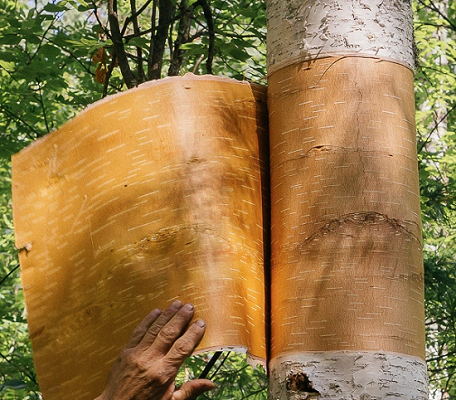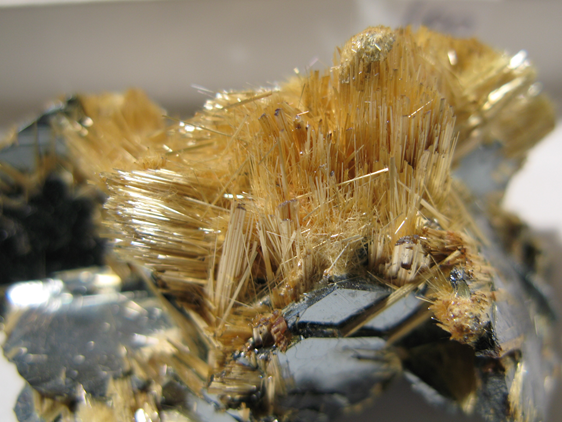The brief introduction of Betulinic acid
Jul 29,2024
Introduction
Betulinic acid (3β, hydroxyl-lup-20(29)-en-28-oic acid) (BA) is structurally a triterpenoid of lupane-structured pentacyclic triterpene. Its empirical formula is C30H48O3. Although it is found in several plant species, it is primarily extracted from the bark of plants belonging to the Betulaceae family. It can also be produced chemically via betulin (lup-20(29)-ene-3β, 28-diol) (B) oxidation. BA was isolated in 1902 from Gratiola officinalis (Plantaginaceae family). The LD50 value of oral administration of betalamic acid is> 2000 mg/kg in mice.

Occource
This compound wields a special place among naturally derived remedies since outer birchbark, containing BA as an active substance, has been used in folk medicine for centuries. BA, alongside Betulin, is present in the outer bark of many tree species, but its amount in plants is relatively small. The exception is a swampy plant, Menyanthes trifoliata, whose underground parts contain a significant amount of free BA. It can also be obtained from various plant species[1]. By methanolic extraction, BA can be isolated from Quisqualis fructus, the aerial parts of Vietnamese Orthosiphon stamineus, the leaves of Vitex negundo, Combretum quadrangular and Eucalyptus camaldulensis, stem barks of Tetra-centron sinense and Physocarpus intermedium and twigs of Ilex macropods, BA can also be isolated from the ethanolic extracts of different plant species: Tovomita krukovii, Ipomoea pes-caprae, Ancistrocladus heyneanus, Diospyrosleucomelas, from the roots of Anemone raddeana and Uapaca nidida, leaves of Doliocarpus schottianus and Syzrgium claviforum and fruits ofChaenomeles lagenaria.
Biosynthesis
Regarding BA biosynthesis, two major steps are to be distinguished—lupeol synthesis by 2,3-oxi-dosqualene cyclisation and, subsequently, oxidation in the C28 position by the enzymes of cytochromeP450 (CYP). Several genes encoding the enzymes critical for these reactions have been characterised. Genes for encoding lupeol oxidase have been recently discovered in Arabidopsisthaliana and B. platyphylla bark. CYP genes encoding C28 oxidase have been found in Vitis vinifera, Catharanthusroseus, Medicago truncatula, and Panax gensing. The discovery and characterisation of the above-mentioned genes resulted in a breakthrough in the synthesis of BA by genetic engineering methods. By successfully combining the expression of the C28 oxidase from C. roseus and lupeol synthase from A.thaliana, BA was obtained in Saccharomyces cerevisiae from endogenous yeast 2,3-oxidosqualene. Several chemical methods of BA synthesis from Betulin have been provided.
Uses
Himalayan birch contains botulin that can be converted into betulinic acid very easily. Studies showed that betulinic acid decreases the growth of malignant melanoma and cancer of the lungs and liver. Betulinic acid is a famous growth inhibitor of neuroectodermal, malignant tumour cells and human melanoma. In these cells, betulinic acid also induces apoptosis. In chemoselective cells, anticancer agents with different activity also trigger apoptosis[2]. It alters the functions of mitochondria that play a role in apoptosis, leading to cell death. A xenograft mouse model in a panel of cancer cells and a primary tumour sample has been used for the antitumor cytotoxicity of betulinic acid. Betulinic acid is reported to be very cytotoxic to melanoma cells. The cytotoxicity of betulinic acid has been studied against neuroectodermal tumour cells, including Ewing sarcoma cells, medulloblastoma, glioblastoma, and neuroblastoma.
References:
[1] ANNA HORDYJEWSKA. Betulin and betulinic acid: triterpenoids derivatives with a powerful biological potential[J]. Phytochemistry Reviews, 2019, 18 3. DOI:10.1007/s11101-019-09623-1.
- Related articles
- Related Qustion
- Betulinic acid - Application, Pharmacokinetics, Synthesis etc. Nov 9, 2021
Clindamycin Phosphate?is the phosphate salt form of?clindamycin, a semi-synthetic, chlorinated Betulinic acid is a pentacyclic triterpenoid that is?lupane?having a double bond at position 20(29).
Supplementation with pyridoxal 5'-phosphate monohydrate can synthesize neurotransmitters such as dopamine and serotonin, maintaining a healthy nervous system.....
Nov 4,2025Biochemical EngineeringRutile is a common golden or reddish coloured titanium oxide mineral that occurs in a variety of crystalline forms, shown below in the form of long needle-like crystals.....
Jul 29,2024APIBetulinic acid
472-15-1You may like
- Betulinic acid
-

- $5.00/ KG
- 2025-12-17
- CAS:472-15-1
- Min. Order: 1KG
- Purity: 99% hplc
- Supply Ability: 500TONS
- Betulinic acid
-

- $0.00 / 1kg
- 2025-12-16
- CAS:472-15-1
- Min. Order: 1kg
- Purity: 0.99
- Supply Ability: 1000kg
- Betulinic acid
-

- $33.00 / 50mg
- 2025-12-16
- CAS:472-15-1
- Min. Order:
- Purity: 98.22%
- Supply Ability: 10g






